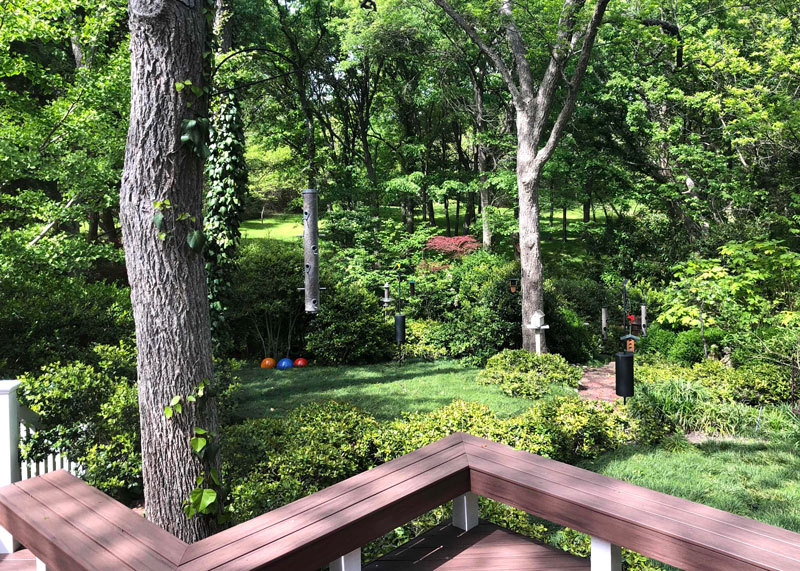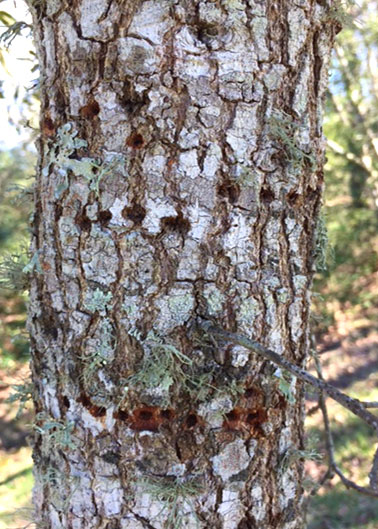Tree Question Triad
Here are three questions relating to trees that come up every year about now. See if any might be of interest to you.

“Our tree roots look like they might eventually threaten our foundation unless we intervene. They’re about 15 feet from the house. What can we do and when should we do it?”
You could remove any that are heading directly toward the foundation. Late fall or early winter is the best time to do so – including now. That allows the tree several months to respond to the removal by growing deeper roots prior to the next summer’s hot, dry weather. Talk to a certified arborist about installing a root barrier to prevent roots from growing toward the foundation as well. Put the barrier as far from the tree as possible.

“It looks like we’ve had a good bit of erosion beneath our trees. The ground is bare and we can see the roots. Can we add soil to cover the roots? When should we do it?”
I’m going to take the answer a different direction than what most might expect. Most times this ends up being something entirely different. Shade causes the grass to die out, and then as the major surface roots grow larger, they swell up and out of the soil. I see it all the time. (See Question 1 in this week’s Q&A section.) It’s usually not erosion at all, in which case adding soil over the roots would drive much-needed oxygen out of the root zone – a very bad thing.
In those less-common instances where erosion actually has occurred you can replace what has washed away. It’s probably best to replace the eroded soil with the same type of topsoil, but hopefully you won’t be covering more than 15 or 20 percent of the root area of the tree and hopefully with no more than an inch or so in a given year.
In either case you’ll want to find a good groundcover for the area. My own choice in both of these situations in our own landscape has been mondograss (“monkeygrass”). It holds the soil tenaciously against erosion, and it also thrives in shade where turf just can’t survive. (See photo of our own backyard above. I have probably planted 1/2-acre of mondograss here and elsewhere in our landscape. I dig and divide from my own plants.)

“There are rows of holes in the trunk of our live oak. Are they anything we need to worry about? The tree looks healthy otherwise.”
Woodpeckers and sapsuckers cause those. They perch on the trunk and peck their ways around almost like a machine gun has strafed the tree. They don’t suggest the presence of any particular insect, nor do they cause a problem on their own unless they riddle the same spot on the trunk repeatedly. You’ll see their effects on pecans as well. I’ve had them harm a couple of hollies in our landscape, and for that I’ve sealed the open wounds with pruning paint and applied a product called Tree Tanglefoot (not always easy to find) to discourage their further work. But in almost all cases they’re no particular cause for concern.
